Demo video: Setting up maintenance windows in APEX AIOps Incident Management ►
This video provides a demo on how to set up maintenance windows in APEX AIOps Incident Management and suppress noise.
*Please note Moogsoft is now part of Dell's IT Operations solution called APEX AIOps, and changed its name to APEX AIOps Incident Management. The UI in this video may differ slightly but the content covered is still relevant.
When an asset is undergoing maintenance, the data could look anomalous.

But we don’t need to worry about it since we know the cause and the effect is temporary. In this video, we’ll show you how to tag those alerts so you won’t be distracted by them.
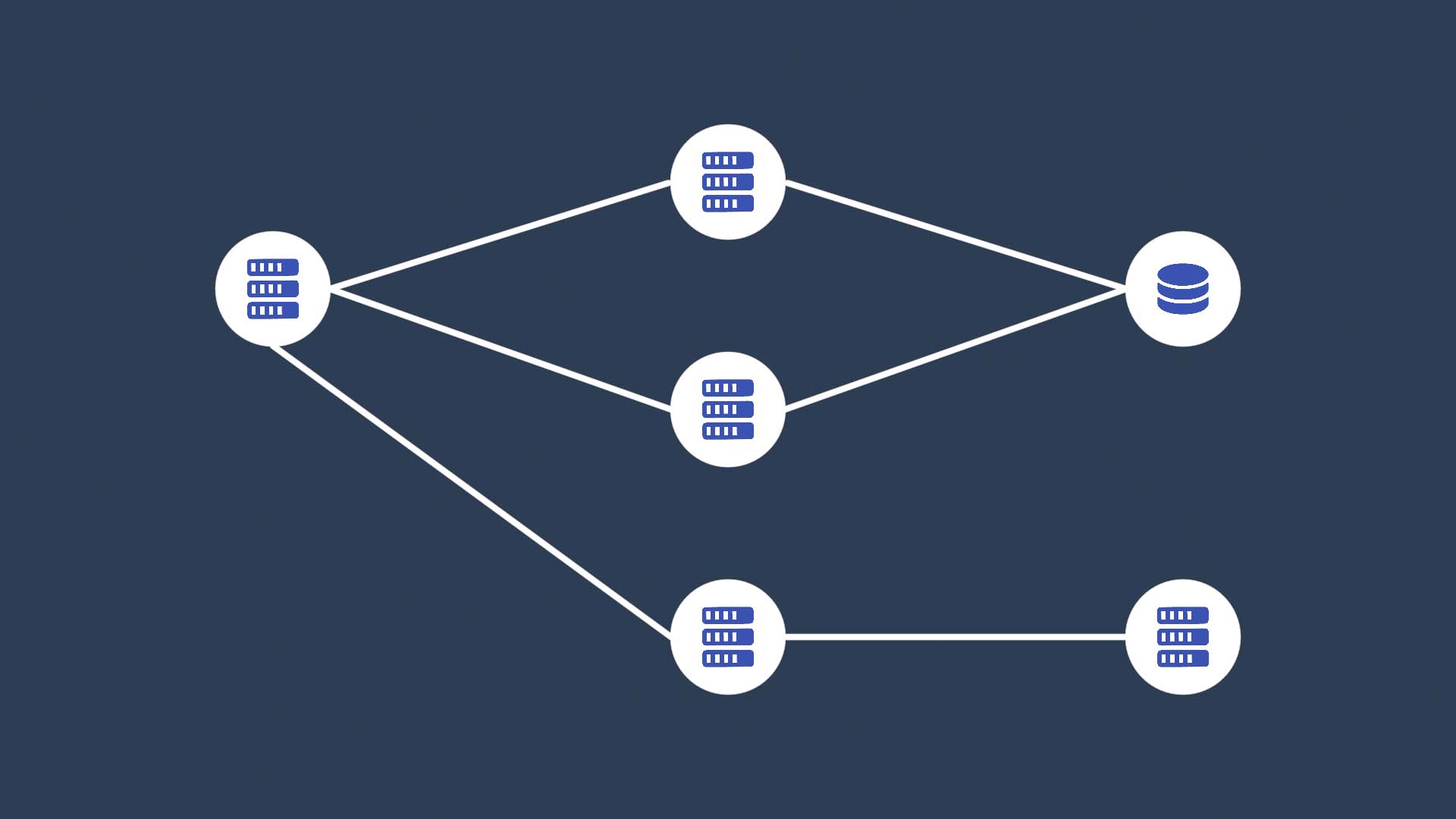
Let’s say this resource will go into maintenance, so, during that time, we want to tag all the events that come in from there as “in maintenance”.
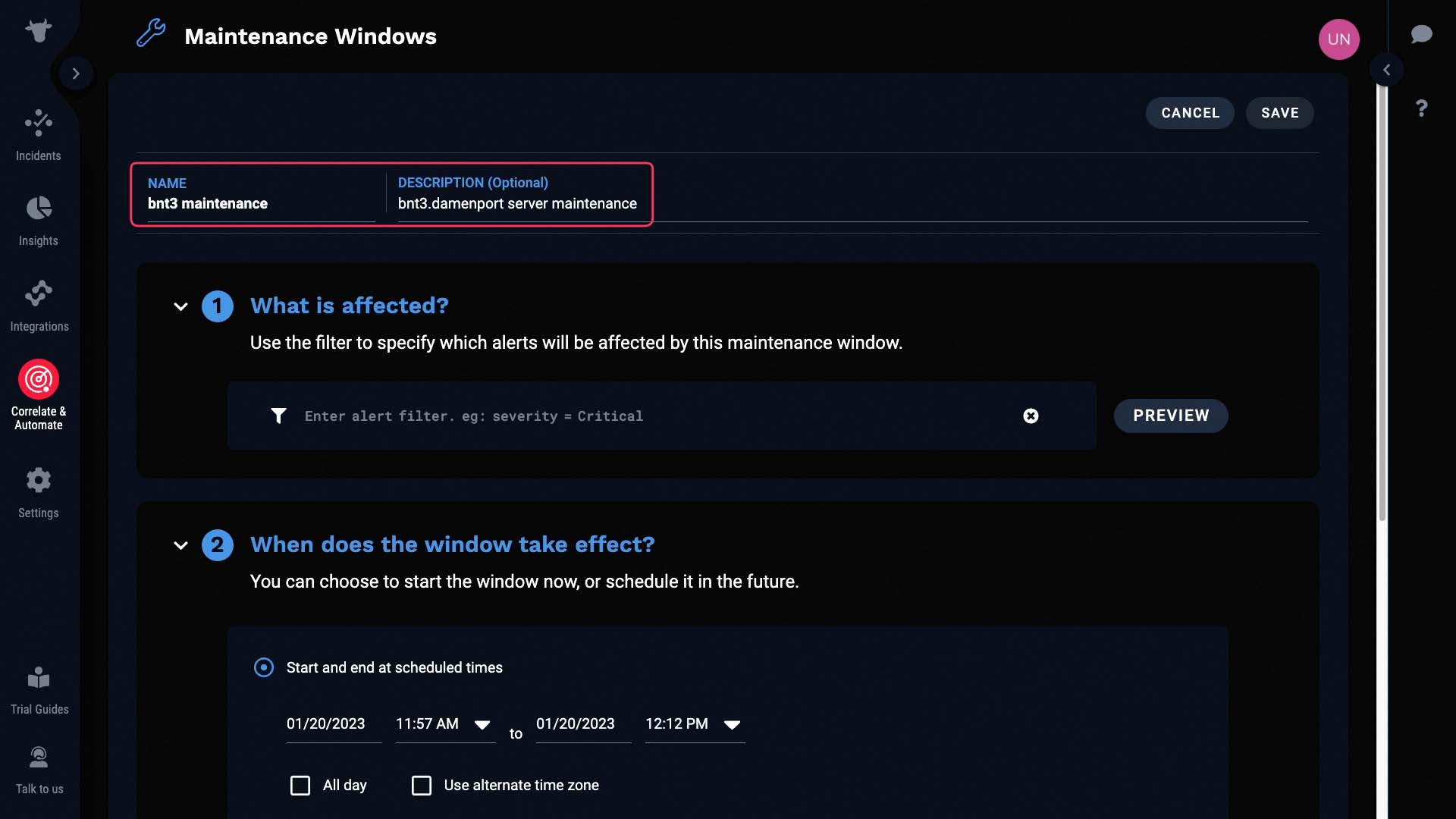
Specify what’s in maintenance here.
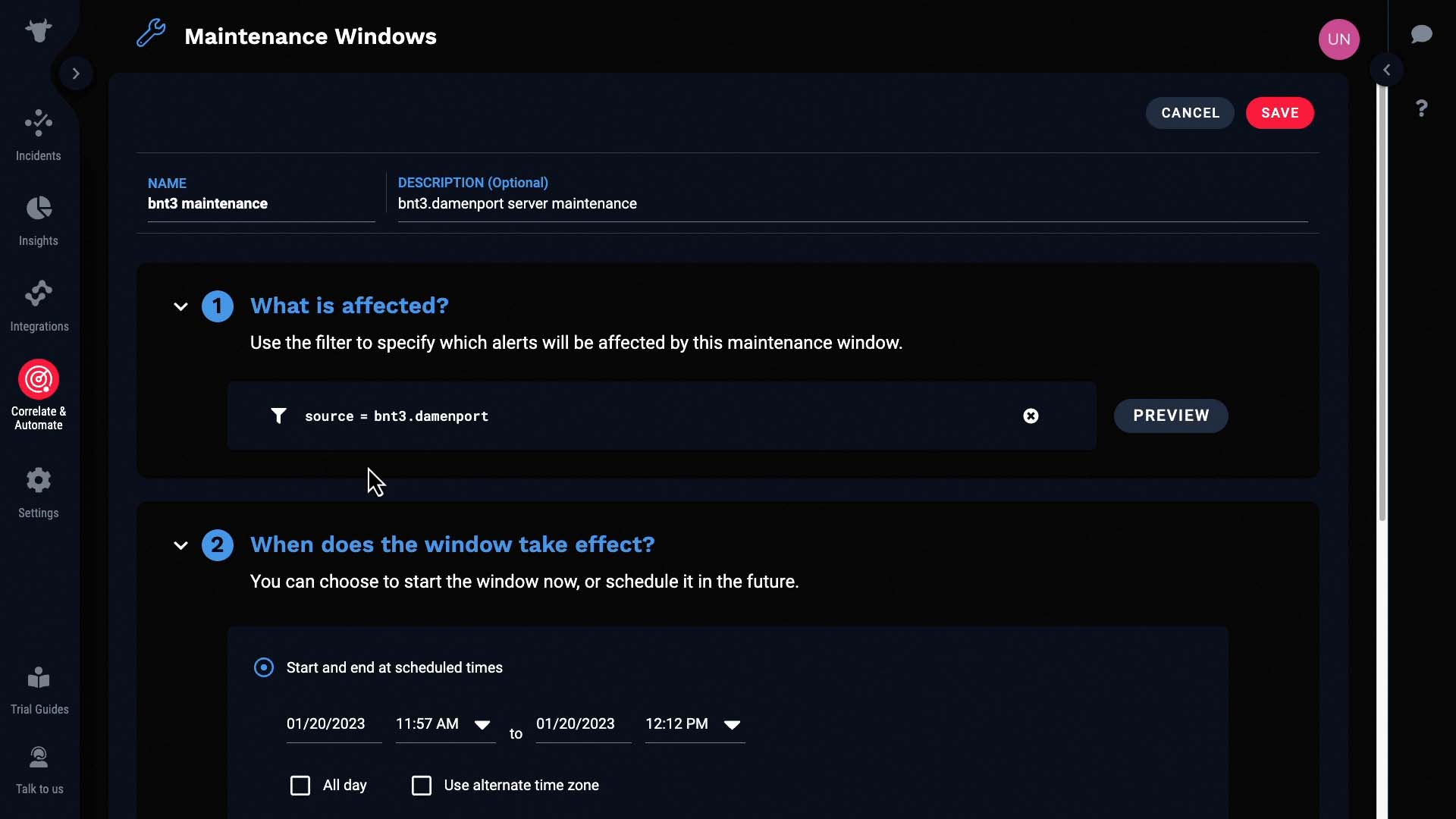
And when the maintenance window takes effect. You can schedule it ahead of time, and make it recurring if you want to.
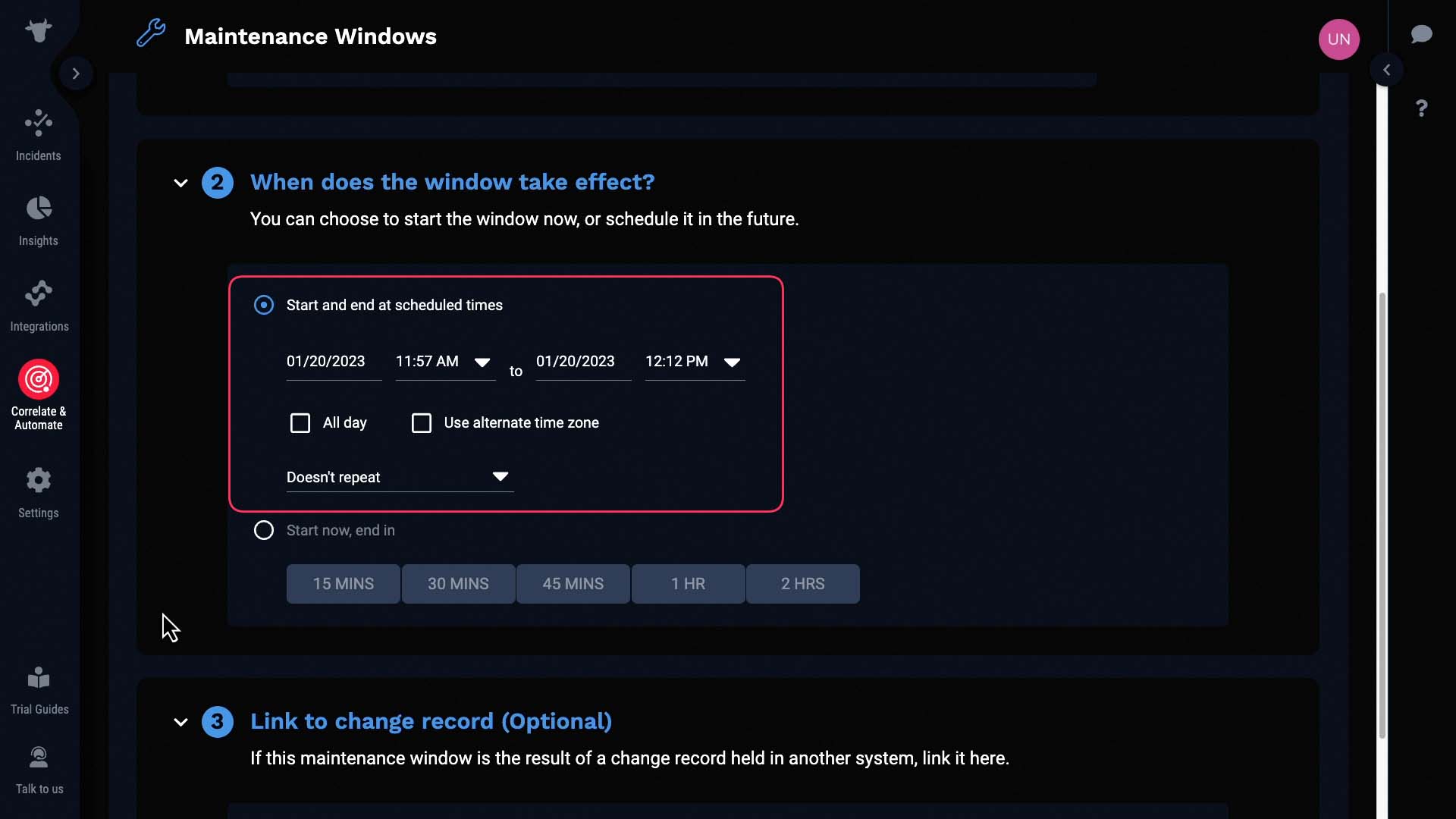
But, let’s set it to start now so I can show you the result right away.
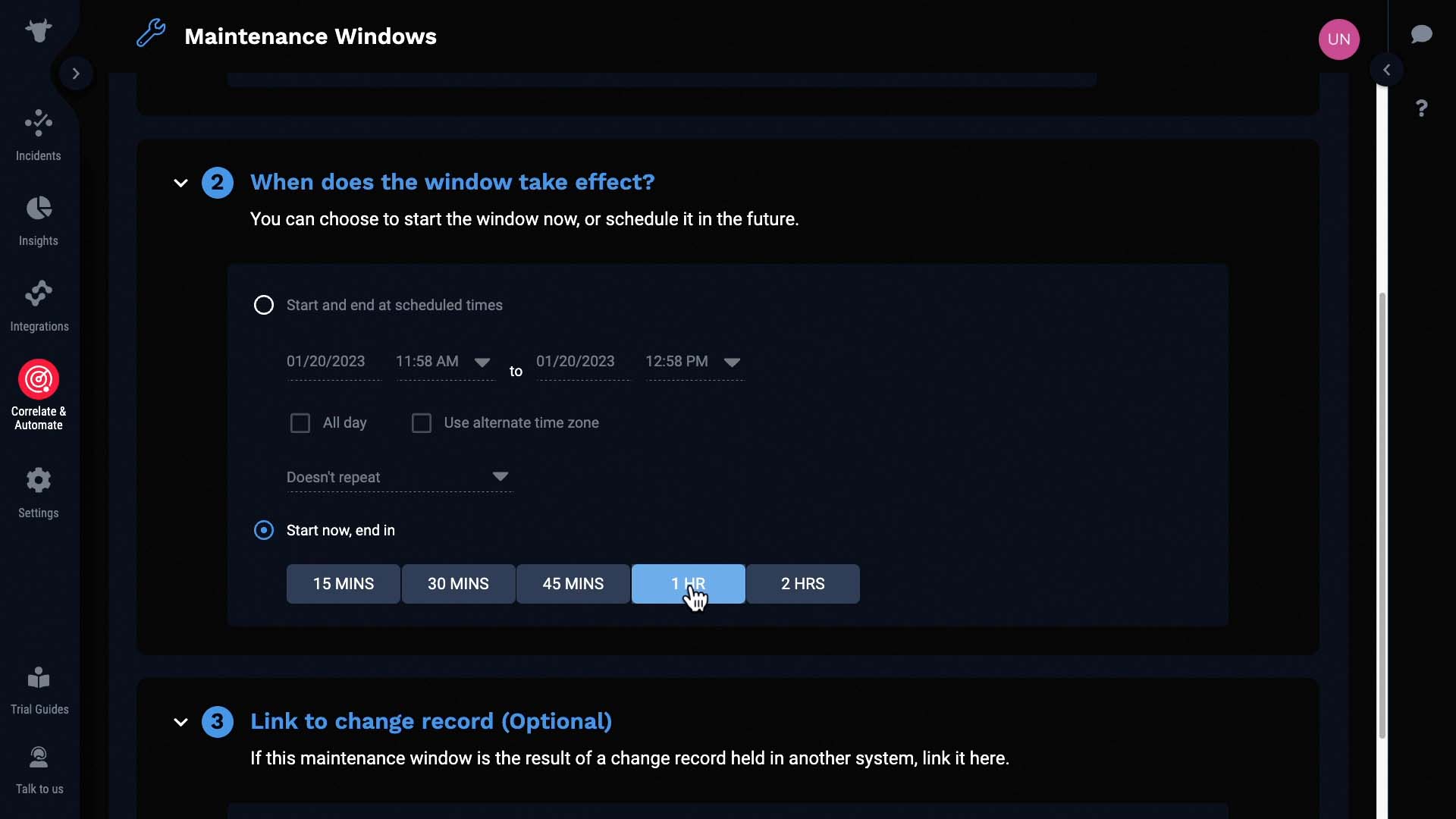
Now, the alerts that match the maintenance window criteria will be marked as such, giving the users more context for the incidents.

One thing to keep in mind here is the difference between these two columns. The “In maintenance” column indicates whether the alert is in a currently active maintenance window. So even though it says true for this alert, after this maintenance window closes it will turn to false.
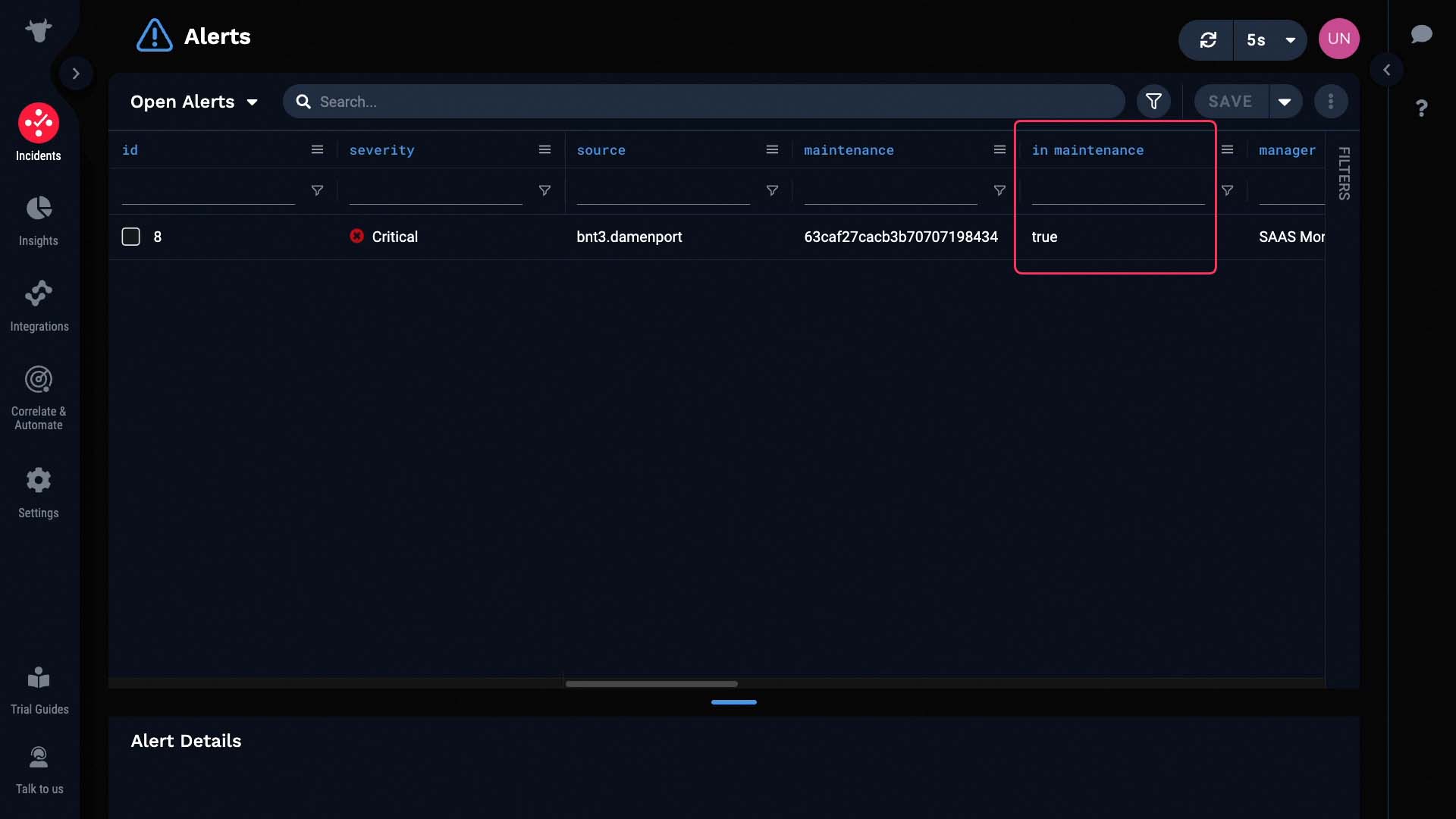
After that, you can still tell if the alert happened during a maintenance window or not by checking the “maintenance” column.
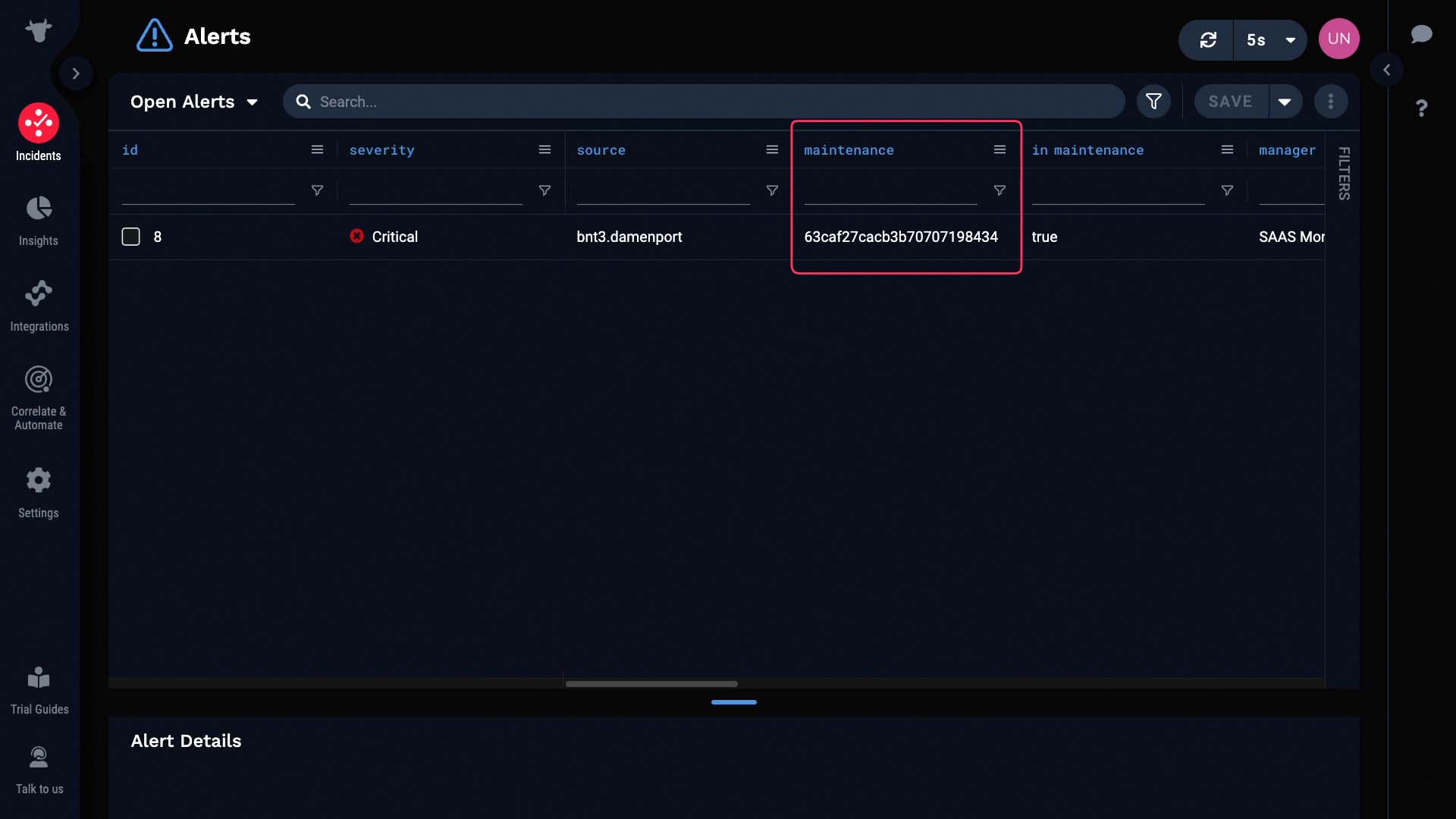
Now, you may prefer not seeing the alerts that happened during the maintenance window at all.
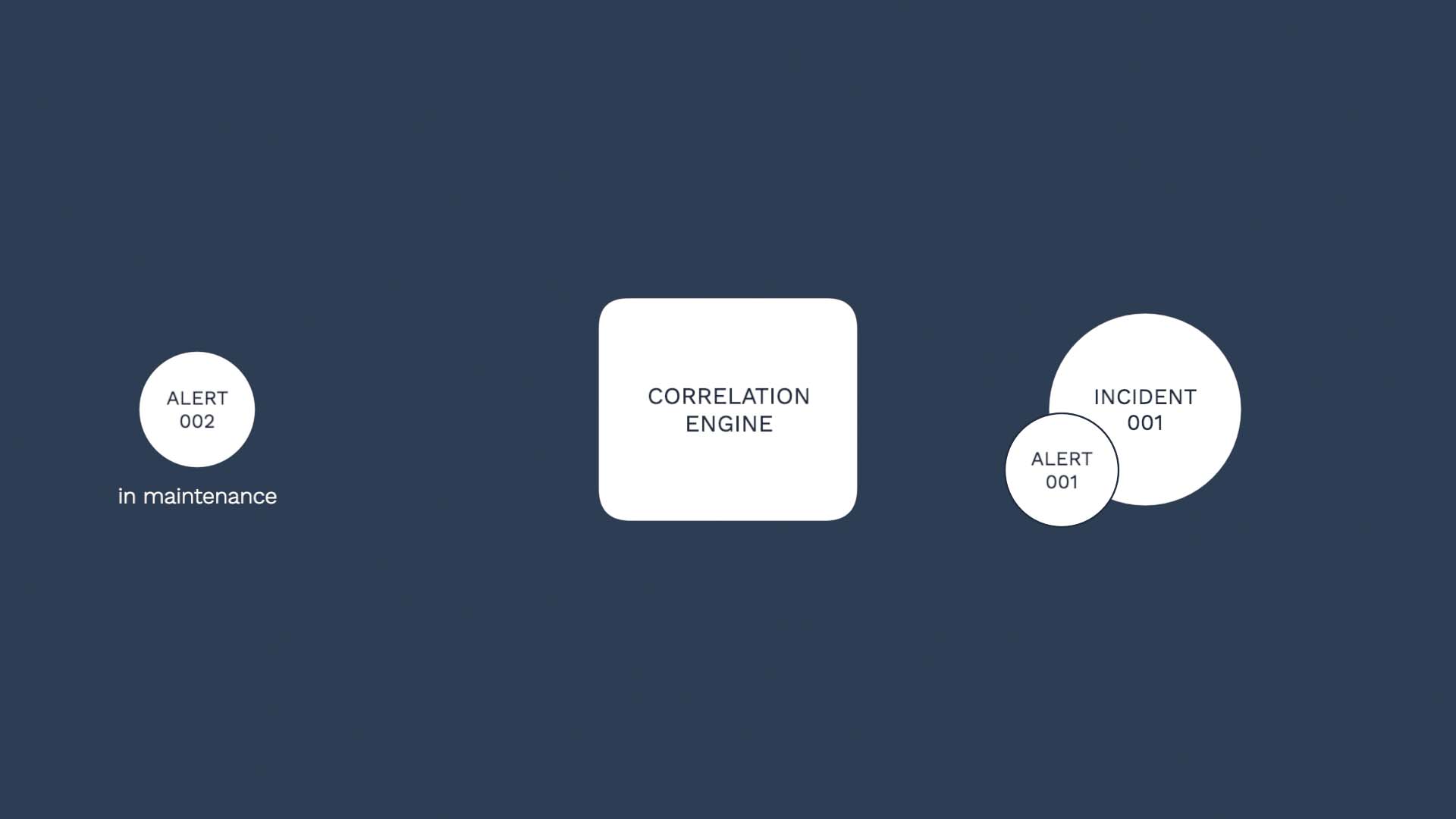
Let me show you how to do that. We can set up a filter to ignore those alerts raised during the maintenance window from the impacted assets.
This way we can reduce noise and surface what truly requires the user’s attention.
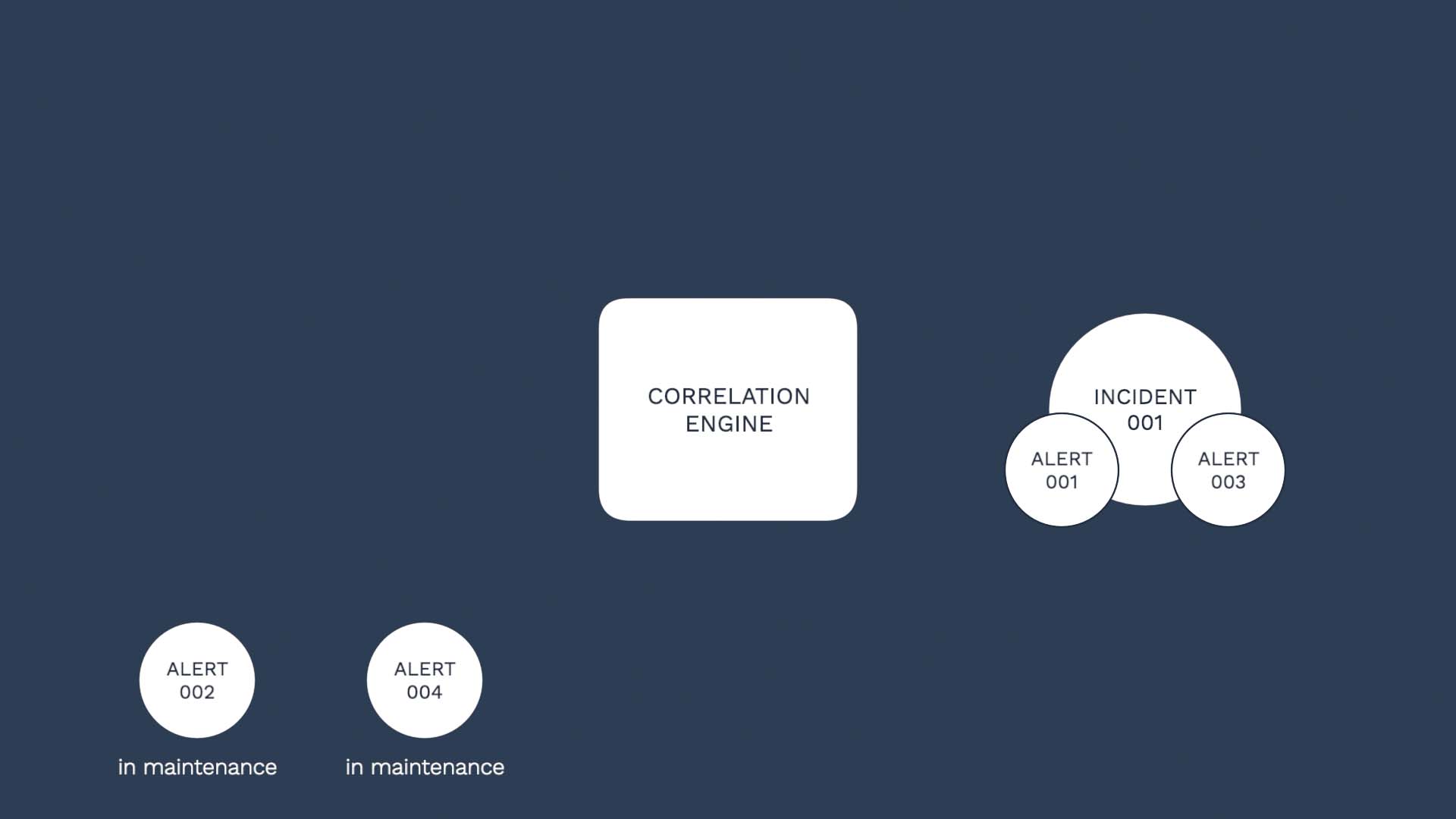
To filter out the alerts in maintenance, we are going to add a scope filter to our correlation definition.
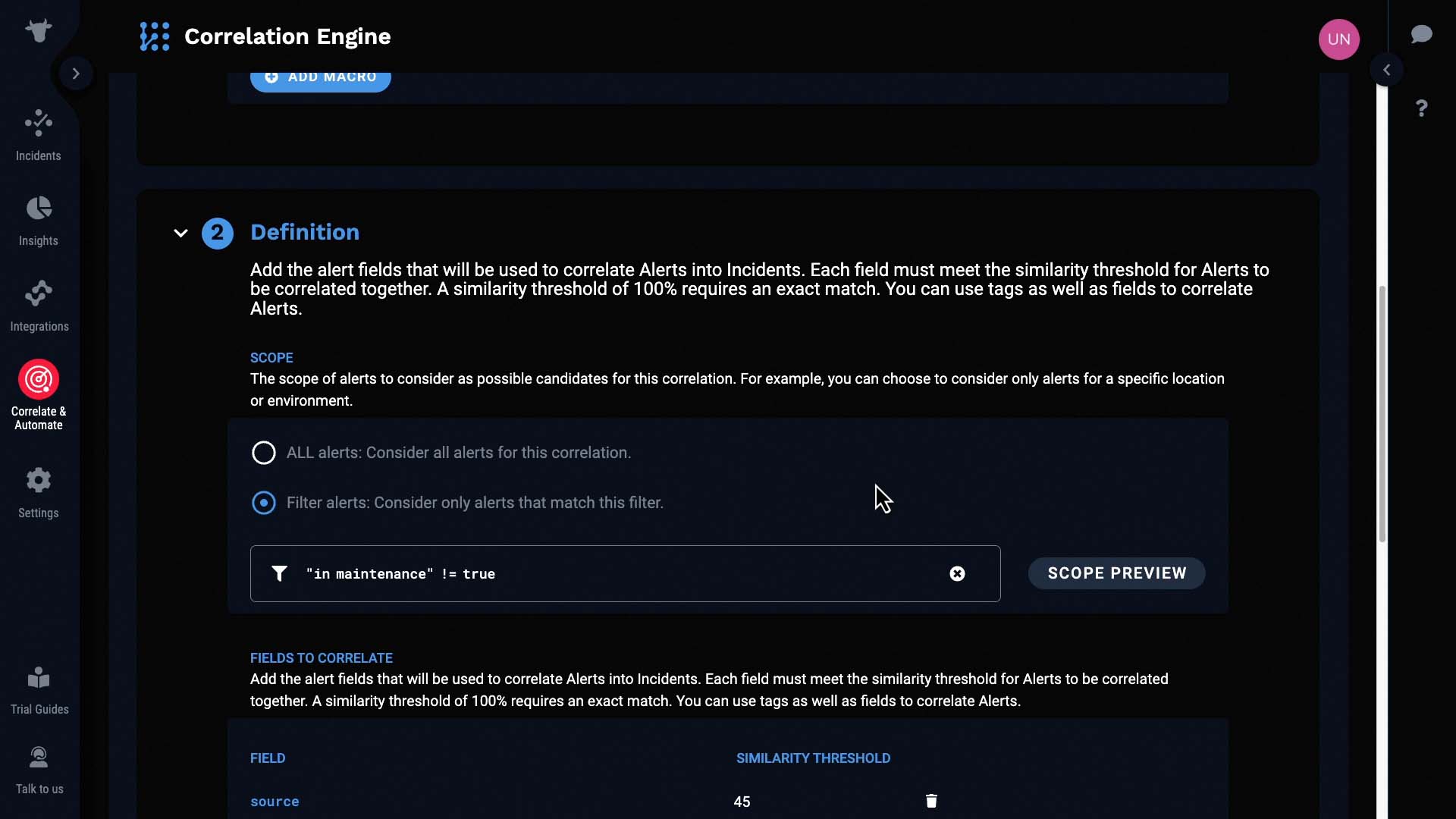
Now, only the alerts that are not in maintenance will be processed by this correlation engine.
So that’s the UI-based way of creating and managing maintenance windows. We also offer API-based method. For example, you may currently set up maintenance windows in ServiceNow. Then rather than entering the same information in Incident Management, you can make an API call from ServiceNow to create a window in Incident Management.
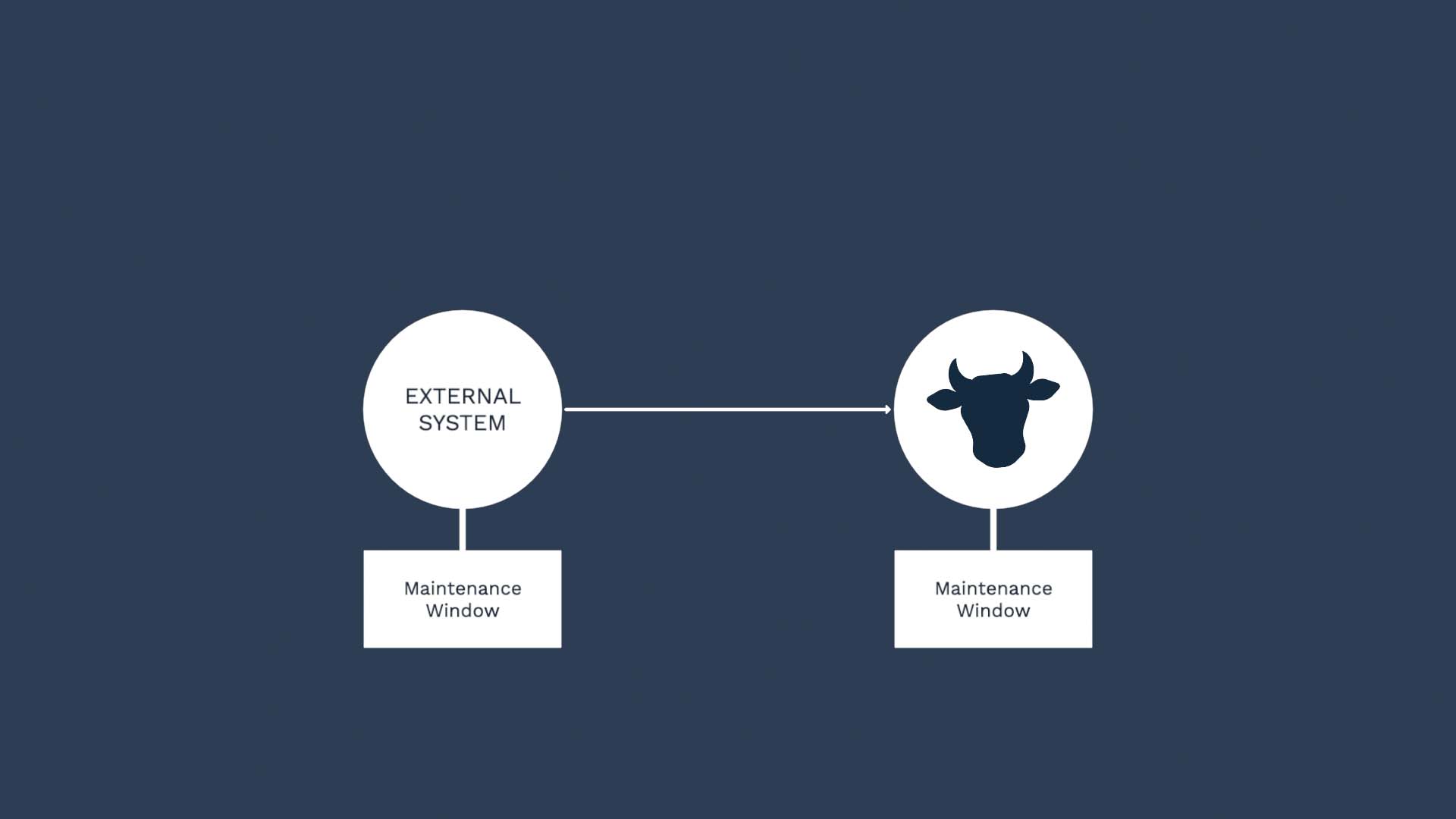
Now you know how to set up maintenance windows and suppress noise. Thanks for watching!